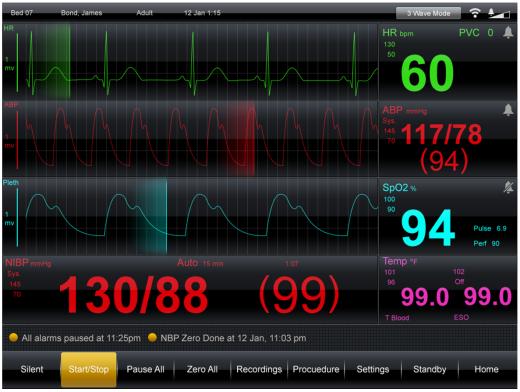Medical embedded applications – big challenges and opportunities
This past week, medical systems have been on my mind. It is not because I am sick – at the time of writing I am nursing a heavy cold, but that does not need medical intervention. It was my annual visit to my ophthalmologist that started me thinking about medical instrumentation. Most people have sight checks every 2 years, but as my father is Type 1 diabetic and suffered glaucoma many years ago, a more frequent check on my eyes seems prudent. This is why I got to experience all the medical electronics.
I was given a thumbs up – nothing to worry about with my eyes – which is always a relief, but, as I said, it left me pondering all the technology that was brought to bear …
Demand for medical care and, hence, for all the equipment that enables the care to be delivered, has been rising exponentially in recent years. There are two, somewhat related reasons for this. Firstly, there are an increasing number of conditions that can now be treated effectively. In the past it was much more common to be told that you would just have to live with the illness and suffer or you might be told that you were going to die. Of course, all of this still happens, but it is much more likely that some treatment will be offered. The second factor is the mean age of the population in western countries is rising – we are living longer – and medical treatment requirements tend to increase with age.
This is all great news for the shareholders of medical instrument manufacturers and the embedded system developers employed by the companies. It is the challenges and opportunities enjoyed by this latter group that interests me.
Historically, medical instruments were bulky, heavy machines to which the patient was transported when necessary. A few machines could be wheeled about within the hospital, as needed. And that was about it. Nowadays, the big focus is on portable instrumentation. Obviously, there are still some big static machines – a hand-held MRI scanner is not likely to appear in the near future! Why this change? The obvious answer is: because we can – modern electronics makes portable equipment more feasible than ever before. But the move is also driven by “the great motivator” – i.e. money.
To understand the finances of modern healthcare, which are a key driver to medical instrument design, the main contexts, in which healthcare is delivered, must be considered:
- Proactive health – mainly preventative measures and health monitoring.
- Home care – an extension of (1), where there may be intervention, drug delivery and/or networking of data involved.
- Residential care – in a nursing home etc.
- Acute care – a hospital
Broadly speaking, the cost of healthcare delivery in each of these contexts increases from (1) to (4). So there is very strong demand for devices that facilitate (1) and (2) in particular [but also increases in efficiency in (3) and (4) are welcome]. Portable devices are obviously strongly favored.
So, the challenges to the embedded software designer may be summarized:
- efficient tools to ensure compact code and fast development
- real time capability – probably an RTOS
- user interface support
- power management
- certification
With healthcare being seen as “in crisis” all over the world, it seems to me that the embedded software developer has the opportunity to be the “hero” and really change lives.
Comments
Leave a Reply
You must be logged in to post a comment.

interesting